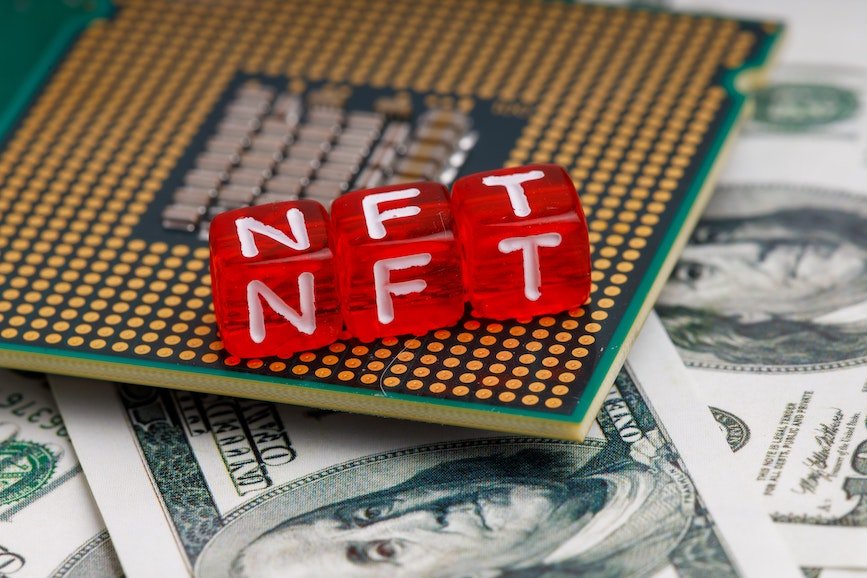
As the cryptocurrency and blockchain markets have grown over the years, so have the variety of asset classes these technologies enable. A couple of examples are Security Tokens (STOs) and Non-Fungible Tokens (NFTs), both of which offer a unique approach to digital asset ownership. But what are these fungible and non-fungible assets, and how do they differ?
Here, we'll take an in-depth look at security tokens vs. NFTs to help you better understand each type of token so that you can make informed decisions when investing or utilizing them as part of your investment strategy.
Jump to a section:
What Is an NFT?
NFTs, or Non-Fungible Tokens, are unique digital assets that can represent fractional ownership in art, music, vintage cars, collectibles or even virtual gaming items.. These unique tokens are bought and sold online using cryptocurrency. They have become an increasingly popular way to purchase fractional ownership digital art. NFTs differ from traditional digital art (e.g., print-on-demand) by providing a sense of digital scarcity and uniqueness.
Unlike traditional digital artwork (such as a JPEG file), which can be easily copied, shared and printed (with varying degrees of quality), NFTs are generated with blockchain technology to represent something truly one-of-a-kind. This sense of “digital scarcity” means that each NFT token is unique and valuable, and associated with a blockchain, making ownership and investment desirable for collectors and investors.
In addition to providing a sense of digital scarcity, NFTs offer other advantages. For example, since NFTs are stored on the blockchain, they are immutable and secure. This means you can be sure your purchase/investment is safe from fraud or theft. Additionally, because of their use of blockchain technology, NFTs often provide transparency, traceability and verifiability regarding their ownership and provenance – something that traditional physical assets cannot match.
Since NFTs tend to be unique, often their value is based primarily on market demand and market perception, so the underlying value of an NFT can fluctuate and be quite volatile (depending upon the nature of the asset).
Also NFTs do not need to adhere to stringent financial security regulations.
What Is a Security Token?
Security tokens are one of the most promising applications of blockchain technology, providing a more secure solution to bridge the gap between traditional financial markets and the digital world. Security tokens adhere to existing financial security standards and regulations, making them in many cases more attractive than earlier cryptocurrency tokens - particularly for assets with more well understood underlying asset value such as real estate and business ownership.
Generally speaking, security tokens and NFTs represent an investment contract (or “Smart Contract”) into an underlying asset or project. In other words, they grant token holders fractionalized ownership of digital assets.
For instance, a real estate property owner can issue fractionalized ownership in a real estate property through digital security tokens instead of negotiating individual ownership contracts as they would in traditional real estate investments.
These types of token allows investors the potential to trade their fractional ownership shares on secondary markets without going through costly, bureaucratic processes and long closing times typically associated with investing real estate.
Security tokens are similar to traditional financial securities. Depending on the nature of the investment, they contain the same investment attributes, such as ownership, voting rights, and dividend or rental income payments. However, they come with several advantages over traditional investments: they can be much more liquid, can be easily fractionalized into smaller parts, have an immutable record of ownership and transactions on the blockchain, and can provide real-time settlement times.
How Does an NFT work?
Unlike cryptocurrencies or other tokens that are usually interchangeable and used for trading purposes, each NFT is a single-use digital asset that holds its specific value determined by the market and demand for it. This makes it possible for someone to buy or sell an NFT, just like any other physical assets such as art or collectibles.
For example, digital artist Beeple has gained significant attention for creating NFTs, making millions of dollars in sales from tokenized artworks. His pieces have become some of the most valuable works ever sold by a living artist, with one recently selling for over $69 million.
The data stored associated withNFTs and security tokens on a blockchain makes it easy to verify ownership and the transfer of tokens between owners. This means that once a token is created, purchased, and added to the blockchain, it's securely traceable without concerns related to counterfeiting or fraud. In addition, NFTs and security tokens protect the underlying data using the same cryptography and digital signature used in cryptocurrency, providing high-level security for the stored data.
How Does a Security Token Work?
Like NFTs, security tokens are built on blockchain networks and use distributed ledger technology to create a decentralized, immutable digital asset easily fractionalized and transferred from one person to another like a currency. They both also use smart contracts, which act as an automated agreement between two parties, ensuring the security of each party’s funds.
Importantly, security tokens are viewed as ‘securities’ by US regulators when there is an investment of money, and a reasonable expectation of profit through their sale.
Security tokens typically represent ownership in some underlying asset, such as real estate, venture capital funds, or startup equity. A security token enables investors to be granted partial ownership rights in the underlying asset. This entitles security token owners to dividends (or profit sharing), interest payments, rental income, or other benefits depending on the specified terms of the security token sale. As with any traditional investment, investors must do their due diligence to ensure they understand the risks associated with the asset and its associated security token before investing.
Conclusion
So, there you have it – an explanation of the difference between an NFT vs security token. As you can see, each type of digital asset has its purpose and function. For example, security tokens are best used for real estate and business investment purposes, while NFTs are more typically used for unique creative assets like art and collectibles. Ultimately, deciding which type of asset to invest in depends on your personal goals and preferences.
For more information on security tokens and how they are changing real estate investing, go to EquityBrix.com/learn.
If you are looking to grow your wealth and diversify your investment portfolio by learning about innovative ways of investing in real estate go to EquityBrix, or contact us for more information, or sign up for the EquityBrix Newsletter.
EquityBrix is not an investment adviser. This information is for educational purposes only and does not constitute investment or tax advice. It’s important to be informed and to make your own investment decisions or do so in consultation with a professional financial advisor. Under no circumstances should this material be used or considered as an offer to sell or a solicitation of any offer to buy an interest in any investment. Any such offer or solicitation will be made only by means of a written online prospectus relating to the particular investment.
FAQs
What Are Utility Tokens?
Security tokens represent ownership shares in a company or real estate that does business using blockchain technology. Utility tokens are promotional tools that grant holders special access or promotions for future product or service launches, rewards, or rewards points programs.
Utility tokens are digital assets used to represent holders’ rights to use a particular product or service. Companies, music artists, or organizations issue them as part of their token offerings. They can be used for various purposes, such as accessing premium features, rewards, or even paying event or transaction fees.
What Does “Minted” Mean?
Minted means an NFTor security token has been created “minted” and added onto a blockchain ledger. This process records the unique identifying characteristics of the asset, including its status and content details (like a digital signature).
What Does Non-Fungible Mean?
Non-fungible means that an asset cannot be substituted for another item due to its uniqueness. This contrasts with a fungible asset, which can be replaced with an identical item. Non-fungible tokens (NFTs) are non-fungible assets represented by crypto tokens on a blockchain ledger.
What Are Some Examples of Non-Fungible Tokens?
Examples of non-fungible tokens can include in-game items such as virtual weapons, artwork, and collectibles. Increasingly companies and artists have started issuing their own NFTs, allowing users to purchase, trade, and transfer ownership of these digital assets.

